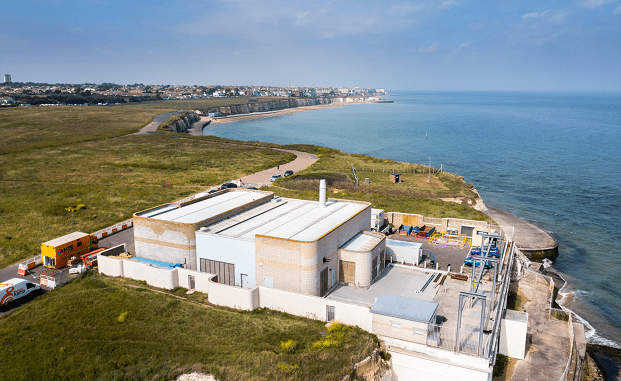
A new report published by Southern Water includes proposals to cut storm releases into the sea off Margate.
Southern Water’s Storm Overflow Task Force says the Margate Pathfinder report is the first step of a collaboration between residents, councils, and community groups to improve drainage, manage wastewater flows, and significantly reduce the use of storm overflows in the area.
Storm overflow (combined sewer outfalls) releases occur in Margate due to the town’s predominantly combined sewer system, where both wastewater and rain runoff enter the same network. During heavy downpours, rain overloads the system. To avoid homes, businesses, schools and roads flooding, excess water is released into the sea. Releases are around 95% rainwater but have not been fully screened.
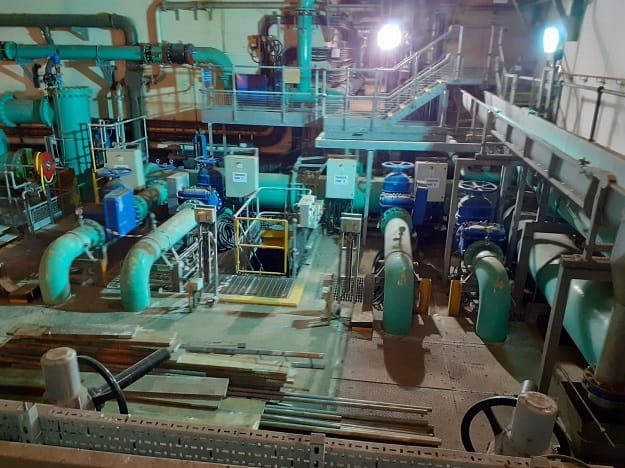
The Margate catchment was specifically chosen as a pathfinder project looking at solutions to waste releases due to recent pumping failures at Margate Wastewater pumping station (WPS). These resulted in discharges of wastewater to coastal waters and have led to the closing of bathing beaches in Thanet, most notable in June and October last year which led to a number of public protests.
Spillage ‘false alarm’
A spill alert flagged for Margate and Westgate on the Safer Seas & River Service yesterday (July 5) was a false alarm, says Southern Water.
The company sent out a crew to investigate the issue yesterday. A spokesperson said: “It appears that there may be some tidal interference causing a false spill alarm activation. We will be sending someone to check why this has happened.”
Solutions
Southern Water is now working alongside Kent County Council, Thanet District Council, and residents to improve drainage in the area and drive down the use of storm overflows.
The types of intervention identified in the report are a mix of innovative and traditional solutions such as removing and slowing the flow of rainwater in the network, making better use of the existing infrastructure, removing impermeable surfaces, creating sustainable drainage in parks, diverting rainwater to the environment, and investing in new assets.
Southern Water has also undertaken flow and manholes surveys. This information will be used to improve the network model for the Margate area.
In addition there is a programme to install some 300 level monitors in the Margate catchment. This will also give more ‘real-time’ data of water levels in the sewers.
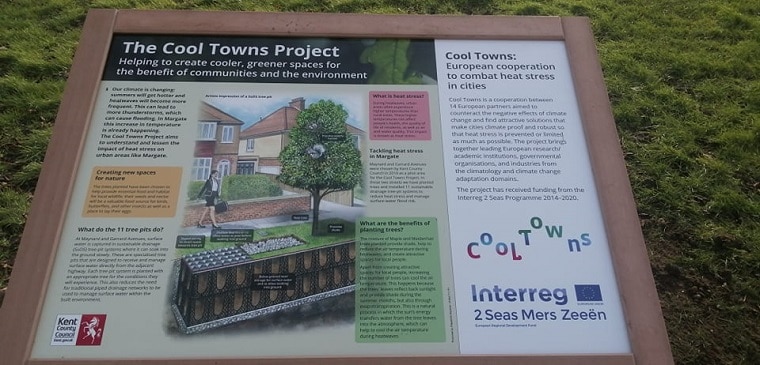
Natural solutions include rain gardens, creating tree pits and even realigning road gulleys. Last year tree pits were created at Margate’s George V Park as part of the project to provide storage for surface water from surrounding roads.
The Kent County Council works mean water is stored and filtered slowly through the planting to remove any pollutants and help it drain through the ground.
Before the upgrade, the water would have drained into the combined sewer network, which could be overwhelmed by heavy rain and add to local flooding.
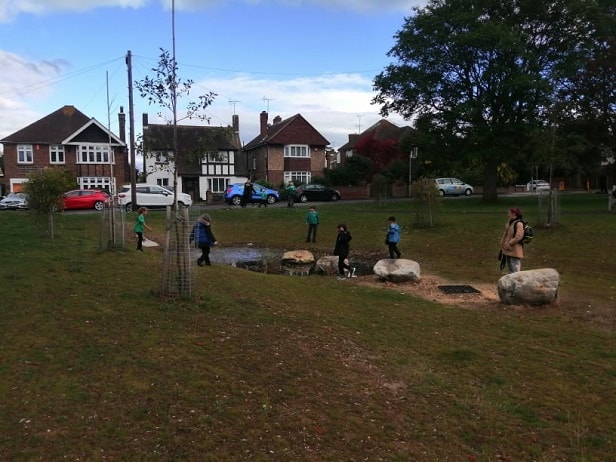
Now 761m3 of surface water can be stored naturally in ponds and swales and in partnership with Isle of Thanet Tree and Woodland Initiative 42 additional trees have been planted in the park.
More than 30 trees were planted along two roads, as part of the EU funded Interreg 2 Seas Cool Towns project. Eleven of those are tree pits which helps manage surface water by collecting and infiltrating the water back into the ground.
The company is also calling on residents to help conserve water and create more green spaces. It welcomes residents sharing information, photos, and suggestions on where improvements could be made in their community.
Southern Water is taking an evidence-based approach and initial findings can be found in the Margate Pathfinder technical report and the four-page summary, available online.
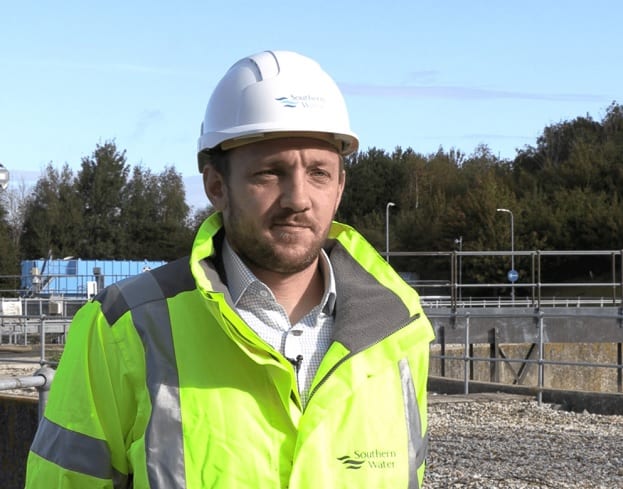
Dr Nick Mills, Head of Southern Water’s Storm Overflow Task Force, said: “This report is only the start of the journey towards a sustainable drainage system in Margate. We will work with partners to better understand the existing drainage systems, to identify and deliver opportunities for improvement, and plan together for the sustainable growth of the town of Margate.
“What we ask of our partners and the community is to continue to support that journey, with photos and data, ideas and enthusiasm so that together we can agree how decisions can be made, now and in the future for the benefit of our environment.”
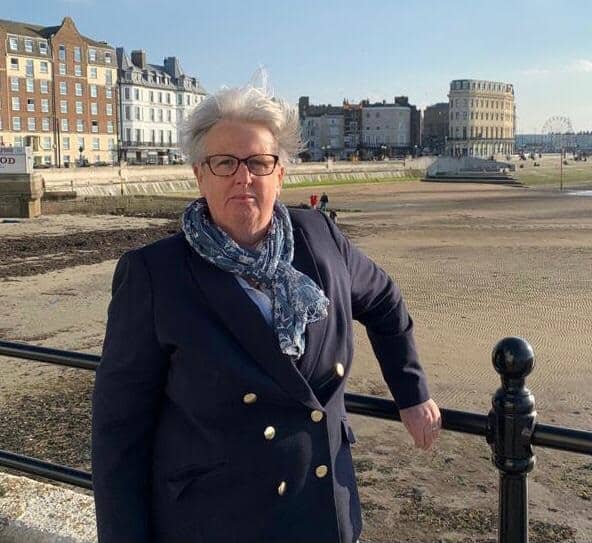
Leader of Thanet District Council, Cllr Ash Ashbee, said: “It’s vital that we all work together to do what we can to improve our local environment. We’re all too aware of the damage that coastal storm releases cause in our area and we welcome this proactive approach to help improve drainage and drive down the use of storm overflows.
“While Southern Water is rightly investing significantly in improvements to their infrastructure, we all have a role to play. The district council will be working closely with the water company, our colleagues at KCC and the local community, doing all we can to collectively tackle this issue.”
Pathfinder projects
Margate is one of Southern Water’s five pathfinder projects, introducing sustainable solutions to reduce the flow of rainwater in the combined sewer system.
If successful, similar projects will be expanded across the region and become a key part of Southern Water’s efforts to reduce storm releases and flooding.
In 2019-20 there were 434 polluting releases by Southern Water. The company says it aims to reduce that to 80 by 2025 and zero by 2040.
In April water company chiefs at a public meeting in Ramsgate pledged real time monitoring of bacteria in our coastal waters, a £300million investment in Kent and a Southern Water stakeholder group for Thanet would be implemented.
Campaigners from SOS Ramsgate, who had been pushing for the meeting since last year, were among those attending.
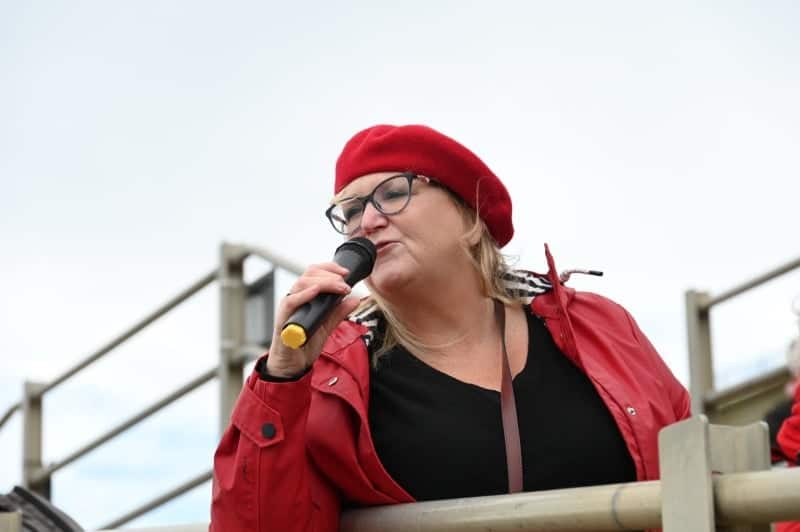
Cllr Karen Constantine, who is a member of the SOS group, said: “At the public meeting in April, after several direct requests, Southern Water acquiesced to community stakeholder engagement. Such engagement is vital to try to rebuild consumer trust, and to be both open and transparent with members of the public, but also to take on board what public concerns – and needs are.
“To date this hasn’t happened. In my recent conversations with Southern Water, it appears to me that there is an attempt to do this on the ‘cheap’ and are barely doing it at all – despite their public commitment. I am appealing to Southern Water again, to set up a genuine robust stakeholder group, directly with those members of the public who are impacted by sewerage.
“Members of the public, who are paying high water bills, want concrete reassurance that water is safe. Hard questions, specific plans and real listening are vital. I’ve urged Southern Water repeatedly, to get a genuine stakeholder group set up and to adequately resource it. Short cuts simply won’t work.”
Next steps
Southern Water are undertaking to build a new network model of the combined sewer network within Margate.
Southern Water is using Geographical information systems (GIS) to identify large roofs and large impermeable areas that may connect into the combined system. Staff will then work with the owners to identify if these are connected and what are the opportunities to divert the flow or slow it, before it connects to the combined system.
Continued work with KCC to identify areas of highway drainage that could be disconnected from the combined sewer and connected to a surface water system or an infiltration solution (sustainable urban drainage type). Road drainage could be diverted to local infiltration areas (such as treepits or road side basins) or larger green spaces, similar to the George Park project.
Pilot areas for various domestic solutions within the catchment to assess the benefit, adoption and maintenance requirements, including:
- Smart water butts
- Raised planters
- Property level Rain gardens
- Soakaways
- Porous paving.
Investigating if any optimization of pumping station control can be done to better utilise catchment storage and smooth the flow being passed forward by the pumping station. This may reduce the frequency that the system is overwhelmed and therefore spills via the Storm Overflows.
Construction schemes likely to complete by 2023.
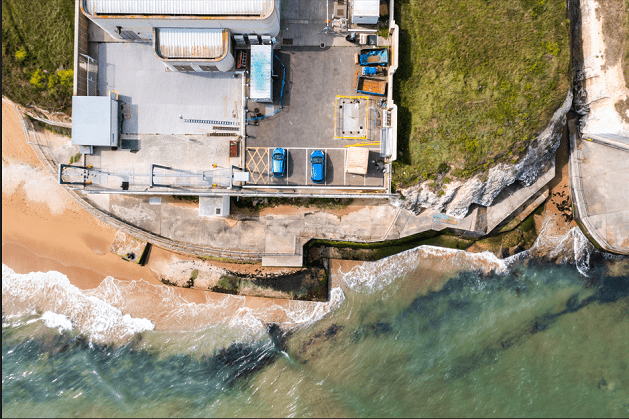
Margate WPS – Phase 2
- Install Control Penstocks to improve isolation for maintenance
- Carry out concrete repairs
- Carry out screw pump replacement
- Improve instrumentation arrangement and access.
- Relocate existing storm return flow meter
- Install new bypass channel to enable.
- Carry out works to the software network.
Broadstairs WPS – Phase 2
- .Replace the existing DWF lift pumps.
- Install one new and replace two existing isolation penstocks upstream of the inlet pump sump.
- Install one new wall mount distribution board
- Incorporate the existing inlet and storm lift pump flow transmitters into the pump monitoring system.
- Make PLC/HMI/SCADA software modifications associated with the new works

